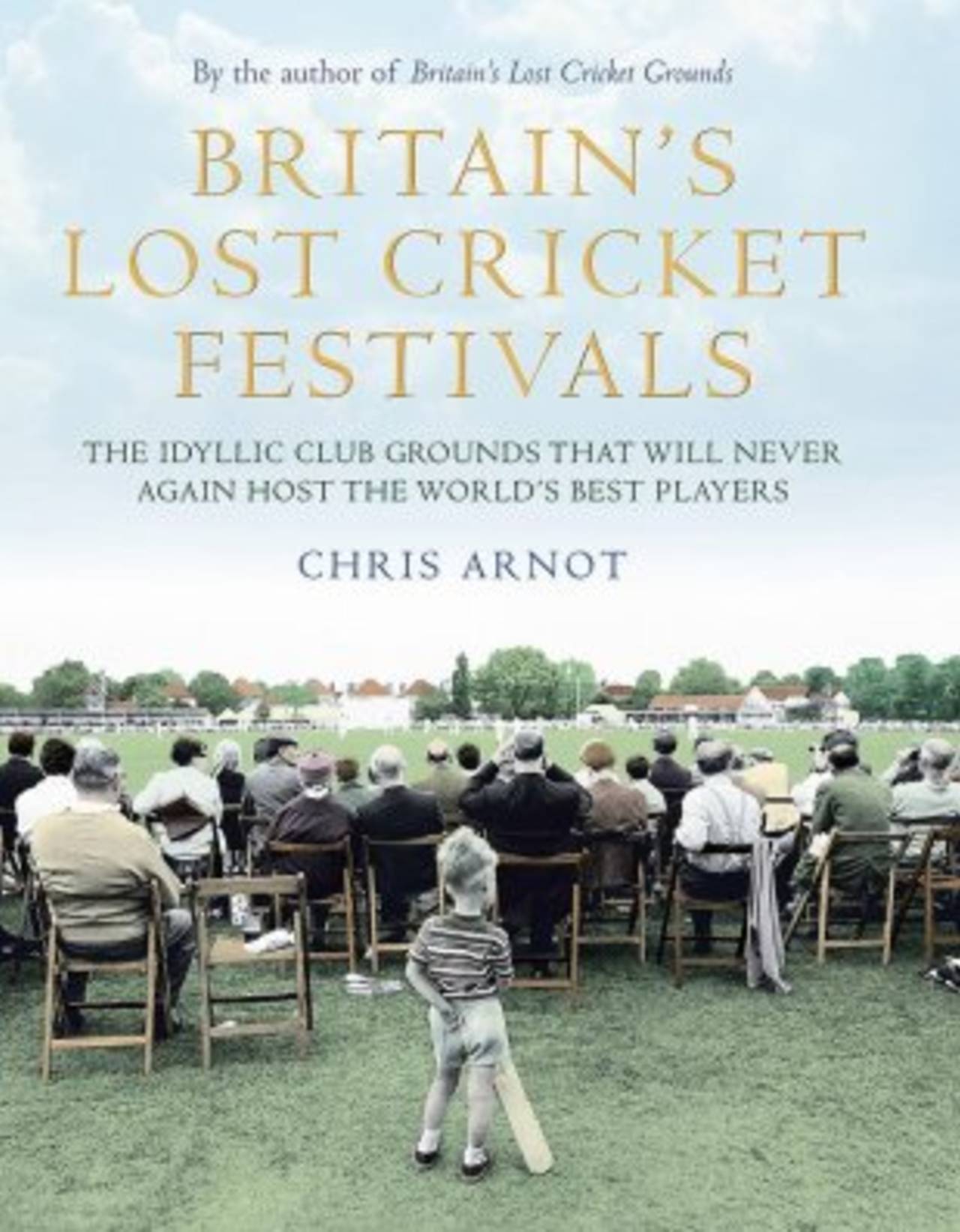For the love of cricket grounds
A diligent examination of grounds in Britain that no longer host first-class cricket
Paul Edwards
12-Jul-2014

Aurum Press Ltd
Is there a medical condition characterised by obsessive nostalgia? If so, Chris Arnot might be a sufferer. His latest book Britain's Lost Cricket Festivals: The Idyllic Grounds that Will Never Again Host the World's Best Players is a fine companion to Britain's Lost Cricket Grounds and follows recent works on breweries, football grounds, and mines. What will Arnot visit next? Tax offices? Slag heaps? What about Britain's Lost Slaughterhouses: Fifty Abattoirs That Will Never Stun Another Beast?
Cricket followers, especially those old enough to remember watching the game at more than a few of the grounds celebrated here, should be grateful for Arnot's diligence. One of the most impressive aspects of this book is that rather than relying on the internet and libraries, Arnot has visited the quondam homes of first-class cricket about which he writes and he has discovered what has become of them. Thus we discover that Stroud's felicitously named Erinoid Plastics ground now lies beneath the Bath Road Trading Estate and that Dover's Crabble, so wonderfully recalled by Neville Cardus, is dominated by rugby pitches.
Inevitably, in such cases there is an overlap between this book and Britain's Lost Cricket Grounds, but when one notices such things, one doesn't mind them. Arnot has done his legwork: he has talked to former players, county officials, and local journalists. We learn a lot about grounds, some of which we had barely considered as first-class venues.
We should probably amend that nostalgia theme a little, too. While there is no mistaking Arnot's joy at being able to visit such festivals as still exist, Cheltenham or Chesterfield, for example, he is not in the business of producing some rose-tinted volume, likely to appeal only to readers of This England. He may regret the fact that first-class matches are no longer played at either Avenue Road, Abergavenny or The Saffrons, Eastbourne, but only Coleridge at his most cuckoo could get too romantic about the absence of the county cricket at Rushden, where, according to Matthew Engel, "the members' toilets were still pretty grim" in 1963 when the final game featured a ball from Brian Statham that reared up and hit Northants' Albert Lightfoot on the nose.
Curiously, if one has an issue with this book, it concerns the absolutism of the subtitle, and it is ironic that a mild criticism may be an indirect source of encouragement to Arnot, who would clearly love to see a fair few of these grounds back on the first-class programme. How can the author, or Aurum Press, maybe, know that these grounds will "never again host the world's best players"?
If the squabble between the county and the school can be patched up, Surrey may return to Whitgift, and Blackpool is certainly still on Lancashire's radar, even if Liverpool and Southport are ahead of Stanley Park at the moment. According to Kent's chief executive, Jamie Clifford, Folkestone and Maidstone still have ambitions to be first-class venues, and who says that Durham will never leave Emirates ICG? It might need nothing more than an Ashes Test and three One Direction gigs to necessitate the use of an outground.
There is another consideration that might force the nine counties who currently never play four-day matches away from their headquarters to think again. As my colleague David Hopps has suggested elsewhere, the pressure to produce good wickets for T20 matches might compel a return to outgrounds, either for a Championship or T20 fixture to relieve pressure on pitches at headquarters. If so, some of the venues examined by Arnot may find that their first-class lives are not yet over.
In the meantime, those of us who relish watching first-class cricket at outgrounds - yes, even at Garon Park, Southend - will have to make do with the 13 venues currently used by ten counties. If we want to find out more about the places that are no longer on the programme, we need do little more than buy Arnot's beautifully produced books with their excellently chosen photographs, even if one is under the illusion that a bizarre number feature Colin Cowdrey.
Britain's Lost Cricket Festivals: The Idyllic Grounds that Will Never Again Host the World's Best Players
by Chris Arnot
Aurum
£25

by Chris Arnot
Aurum
£25

Paul Edwards is a member of Southport and Birkdale CC, which hosted Lancashire matches in 2011 and 2013